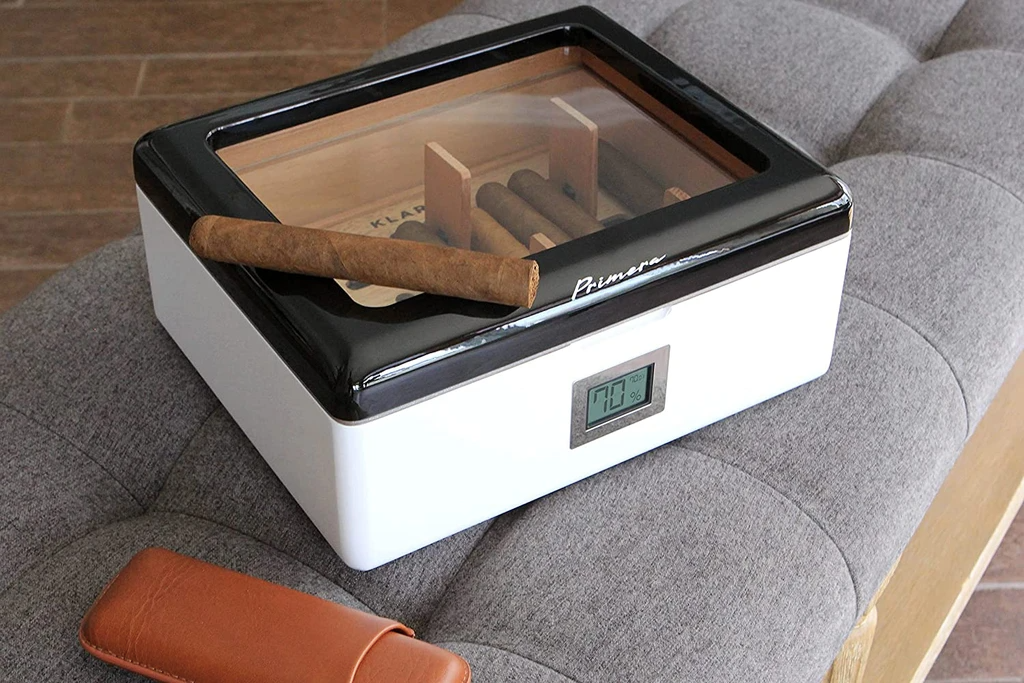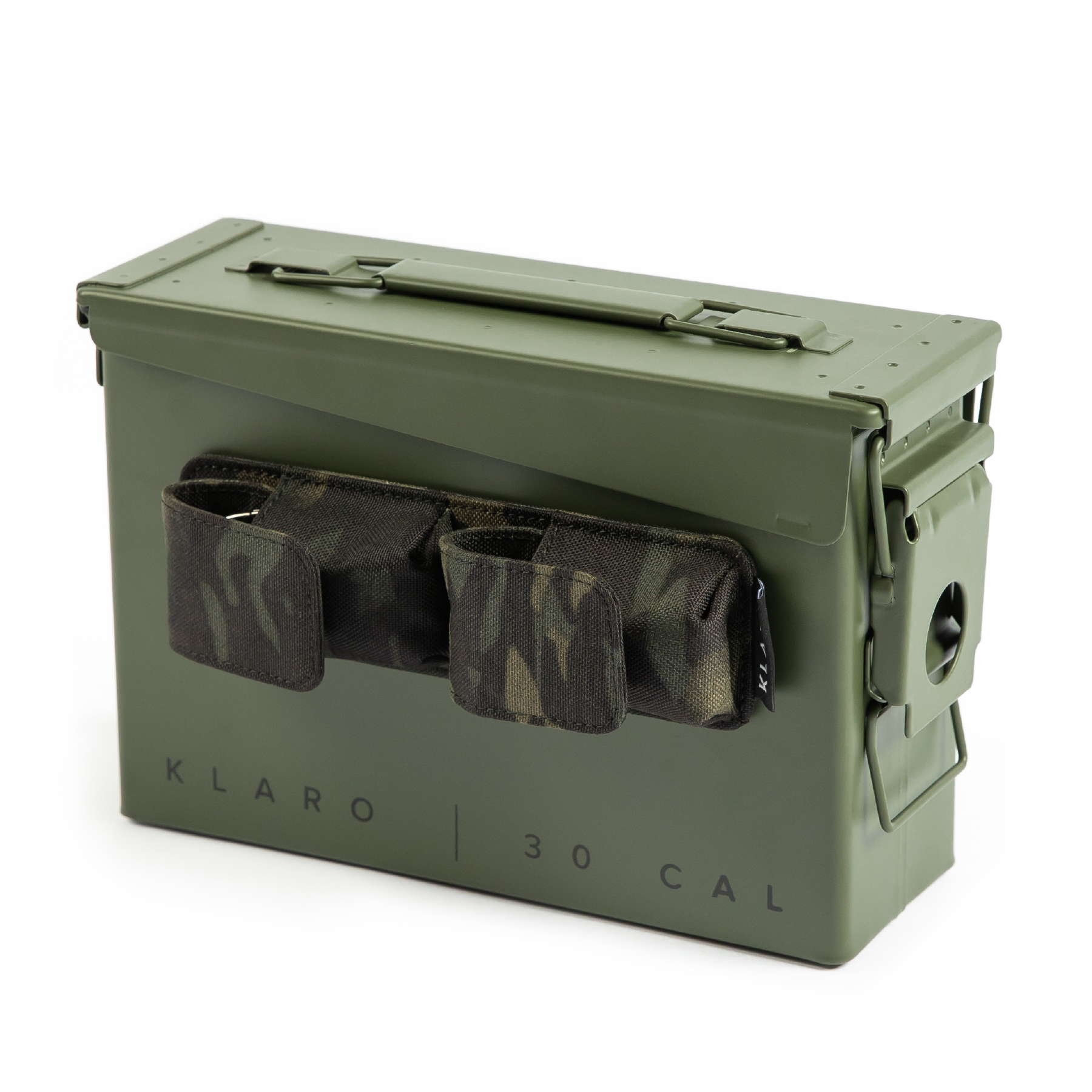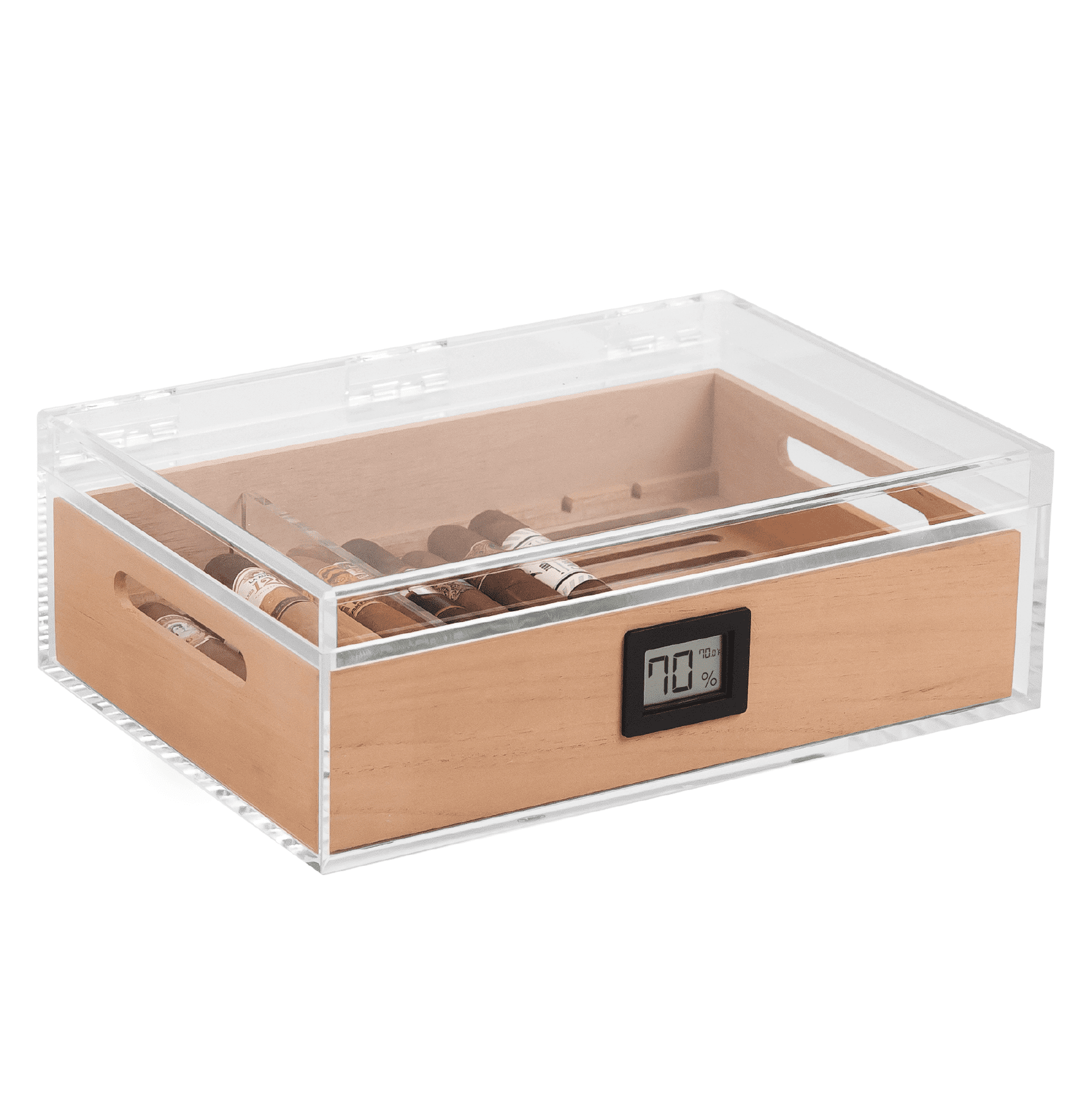Once you’ve entered the world of cigar appreciation, you’ve no doubt also started to explore the many features that go along with it. Things like cutters and high-quality torch lighters add to the ceremony of a good smoke, but none more so than a proper humidor. You probably know by now that if you’re keeping cigars for longer than a couple of weeks at a time, storing them properly will help protect your investment. More than that, a humidor can even improve the taste of a cigar when it’s properly aged.
Of course, cigar smoking can be a luxurious hobby and the amount you choose to spend on the accessories—as well as on the stogies—is up to you. We’re not here to tell you that spending a specific amount will guarantee that your cigars will taste better. Ultimately, the amount of money you choose to spend is between you and your bank account.
That said, there are a lot of considerations that go into buying a humidor that may be directly impacted by the amount of money you choose to spend. This article will look at a few of those considerations, and hopefully, you’ll be able to make an informed decision about the amount of money you should spend on your humidor.
Material
The interior lining of any humidor is—or at the very least should be—made of Spanish cedar. Price becomes a factor when you learn just how much Spanish cedar the interior contains.
Spanish cedar is wood with absorbent qualities. This wood makes it ideal for maintaining the proper level of humidity necessary to store cigars. After seasoning your humidor, the Spanish cedar breathes. This allows it to absorb and then release humidity into the air, keeping cigars in perfect smoking condition.
The amount of Spanish cedar depends highly on the humidor, though. Some low-quality humidors, for example, will only use a veneer of Spanish cedar. Oftentimes, the mere act of seasoning a humidor—which is a necessary step—can cause the lining to warp and peel. While humidors with a full Spanish cedar lining may be more costly, they’re also more effective at protecting your cigars.
Outside of the lining, the cost of the humidor will depend on its finish. Humidors are usually finished in a different type of hardwood, such as walnut or cherry. Alternatively, they could be finished in a material like carbon fiber. This is mostly a stylistic choice, but different materials will cost different amounts. Finally, some higher-end humidors also include a looking glass window, so you can get a nice glimpse inside without letting out any humidity. This isn’t a necessary feature, but it’s certainly nice to have.
Quality
There’s an old adage that says “you get what you pay for.” That’s true in most things, but especially things that require workmanship associated with woodwork. It’s important that a humidor be well-built in order to best hold moisture. Any cracks, seams, or other areas that don’t form a tight seal are areas for moisture and humidity to leak out.
Sharp edges, a clean and complete finish, and an interior free of any cracks or breaks are good signs of quality craftsmanship. If you’re looking for a humidor that has a glass viewing window, pay extra attention to how it’s laid into the wood. Areas like that can be prone to leaks if not installed correctly.
Quality may cost a little more, but it also means you’re not spending additional money to replace a poorly-built humidor in the future. In fact, a well-built version may last for generations, which you’ll read more about below.
Aesthetics
Let’s not mince words: while a humidor is a must for protecting your cigars, it’s very much about the way it looks too. This is—quite obviously—why you find so many styles and features in so many different types of humidors. Many people are willing to spend more money on a humidor that goes with their style.
Humidors come in all shapes and sizes, but they also come in all varieties of exterior woods and other materials as well. From a lovely light-colored matte cherry finish to a rich, dark, and glossy walnut, the type of mood you want to exhibit when you smoke a stogie can be conveyed by your humidor as well. And if woods are a little too classic for your taste, there are other materials too. Materials like carbon fiber make fit more modern spaces, or painted finishes can complement a full room’s decor as well.
Size
 Size isn’t everything, but it definitely matters when you’re buying a humidor. The size of your humidor matters on a lot of levels. At its core, though, it boils down to this: just how many cigars do you keep at a time? If you’re a “smoke-them-as-you-get-them” type, a smaller humidor will do just fine. If you like to keep 25 or more on hand at a time—or even let them age a bit to mature—you’ll need something larger. And the general rule is that larger humidors will cost more.
Size isn’t everything, but it definitely matters when you’re buying a humidor. The size of your humidor matters on a lot of levels. At its core, though, it boils down to this: just how many cigars do you keep at a time? If you’re a “smoke-them-as-you-get-them” type, a smaller humidor will do just fine. If you like to keep 25 or more on hand at a time—or even let them age a bit to mature—you’ll need something larger. And the general rule is that larger humidors will cost more. Outside of travel humidors, which are designed to hold one to five cigars, small humidors are both affordable and simple—and do a great job. For example, our Klaro Desktop Cherry humidors hold between 15-25 cigars, depending on size, and come in both digital and analog versions. On the other hand, our Klaro Octador easily holds up to 100 stogies in a perfect storage environment.
Investment
This speaks to quality but requires forethought as well. A good humidor can—and should—be an investment. When it’s well-built, well-designed, and made of quality material, a humidor can last your lifetime. And in many cases, it can be passed down to later generations as well. When regularly seasoned and handled appropriately, your humidor will last.
And beyond that, it’s important to protect your investment in your cigars. There’s nothing worse than spending good money on a cigar, only to have it shrivel and dry—or worse, grow moldy—in a low-quality humidor. Spending a little additional money nets you protection for your cigars, and puts an heirloom in your family.
Accessories
Certainly, the most important part of a humidor is the box itself. But there’s more to it than that. The humidification system and hygrometer are both important accessories to keeping the humidity levels inside the humidor ideal for cigar storage. And while there are popular two-step humidification systems, we have found that a more thorough—yet easy to maintain—seasoning process works better for Klaro humidors. Other seasoning methods like simply sponging water onto the interior can actually do more damage to the humidor by causing warping. A proper humidification system can keep your humidor in perfect working shape and protect your investment long-term.
Additionally, there are two primary types of hygrometers, which is the tool used to read humidity levels: digital and analog. Either works well, though a digital hygrometer can be easier to use. Further still, a hygrometer may be mounted into the top or front of the humidor to make it easier to read immediately and without opening it. These options may prove a little costlier, but the convenience may make it easier to use.
















